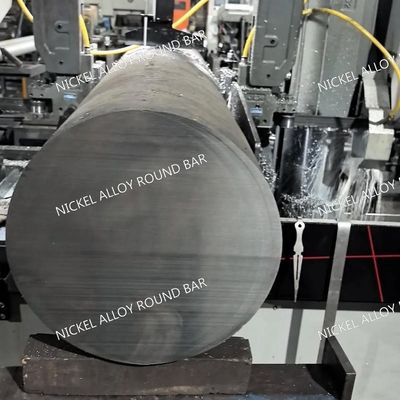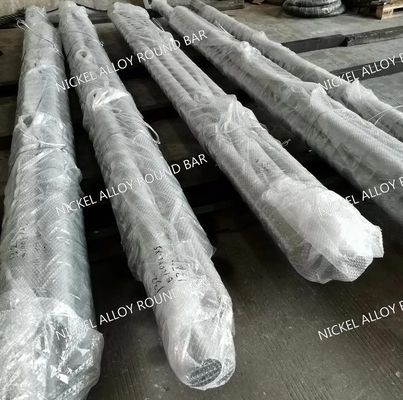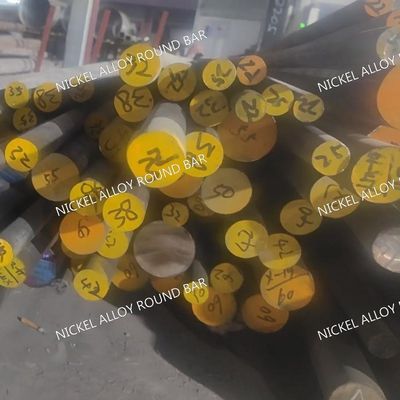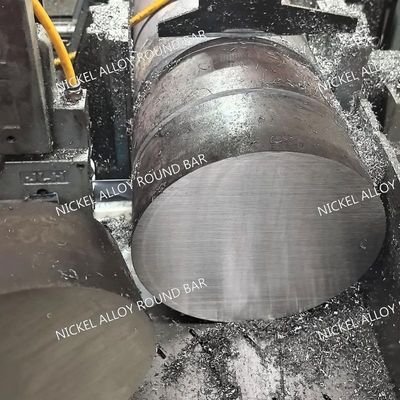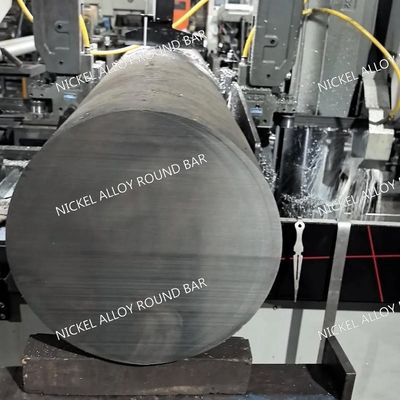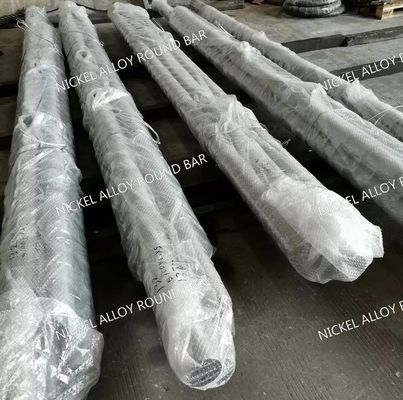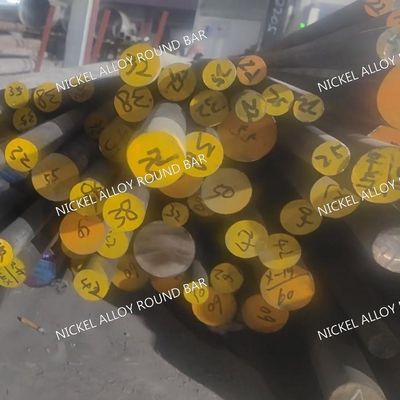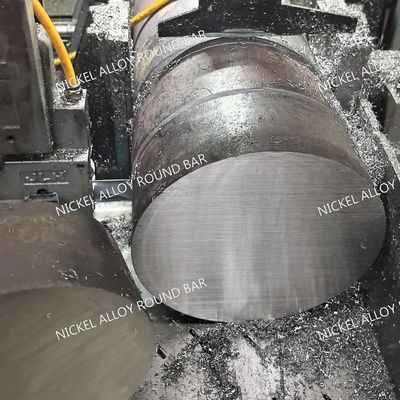-
 Raian IonescuMaterial quality very good. we have cooperate more than 10 Years. They trade lots kinds of steel material. All material quality good. They duty for all material quality. We are planing continue cooperate with them in the future
Raian IonescuMaterial quality very good. we have cooperate more than 10 Years. They trade lots kinds of steel material. All material quality good. They duty for all material quality. We are planing continue cooperate with them in the future
ASTM EN DIN GB Standard Nickel Alloy Round Bar Cold Drawn, Hot Rolled and Forged Bars

Contact me for free samples and coupons.
Whatsapp:0086 18588475571
Wechat: 0086 18588475571
Skype: sales10@aixton.com
If you have any concern, we provide 24-hour online help.
x| Products | Nickel Alloy | Grade | 600 625 718 800 926 C276 C22 M400 K500.etc |
|---|---|---|---|
| Diameter | 3 - 350mm | Length | Custom Cutting Any Length As Request |
| Standard | ASTM EN | Service | Cutting |
| Loading Port | Shanghai Port | Surface | Bright,black |
| Highlight | ASTM standard nickel alloy round bar,cold drawn nickel alloy forged bars,hot rolled nickel alloy bars |
||
ASTM EN DIN GB Standard Nickel Alloy Round Bar Cold Drawn, Hot Rolled and Forged Bars
More Specification Informations
| Products Name | Nickel Alloy Round Bar |
| Grade |
|
| Diameter | 3 - 350mm |
| Length | custom cutting any length as request |
| Surface | bright, Black,pickling,polishing |
| Brand | DELTA |
| Service | cutting, Polishing |
| MOQ | 2 Kgs |
| Other Type | bar, strip,coil,pipe.sheet, plate,wire.etc |
| Packing | Wooden box |
| Loading Port | Shanghai Port |
| Price term | EXW,FOB,CIF,CFR |
| Deliver time | within 12 days |
ASTM EN DIN GB Standard Nickel Alloy Round Bar Cold Drawn, Hot Rolled and Forged Bars
Nickel Alloy Round Bars are high-performance metal rods designed for use in extreme environments involving high temperatures, high pressure, and corrosive media. They are essential components across aerospace, chemical processing, power generation, and marine industries. This product guide details the common grades, governing international standards, key characteristics, and typical applications of nickel alloy round bars, including cold drawn, hot rolled, and forged types.
Common Nickel Alloy Grade
Nickel alloy round bars are available in a wide range of grades, each formulated to meet specific operational demands. The following table summarizes some of the most prevalent grades and their primary features.
| Grade/Series | Common Examples | Key Characteristics & Typical Applications |
|---|---|---|
| Inconel | Inconel 600, Inconel 718 (one of the most widely used in aerospace), Inconel 625, Inconel X-750 | Excellent strength and oxidation resistance at high temperatures; ideal for jet engine components, gas turbines, and nuclear reactors . |
| Hastelloy | Hastelloy X, Hastelloy C-276, Hastelloy B-3 | Superior resistance to a wide range of corrosive chemicals; used in chemical processing, pollution control, and pulp and paper industry . |
| Nimonic | Nimonic 75, Nimonic 80A, Nimonic 90 | A family of age-hardened nickel-chromium alloys known for high creep resistance; commonly used in turbine blades and other high-stress, high-temperature parts . |
| Other International | Alloy 800H/HT, Waspaloy, Haynes 230 | Variants tailored for specific temperature and strength requirements in industrial furnaces, heat-treating equipment, and aerospace frames . |
| Chinese GB Grades | GH4169 (equivalent to Inconel 718), GH3625, GH4133, GH4099 | China's GH-series grades, which include deformation and casting alloys, are widely used in the domestic aerospace and power industries . |
International Standards for Nickel Alloy Round Bars
The production and quality of nickel alloy round bars are strictly controlled by various international standards, which define their chemical composition, mechanical properties, dimensions, and tolerances.
-
ASTM (American Society for Testing and Materials): ASTM standards are widely adopted globally. For example, ASTM B408 specifies the requirements for nickel-iron-chromium alloy rods and bars like N08800 (Incoloy 800), covering chemical composition and mechanical properties . Other relevant standards cover dimensional and shape tolerances for drawn bars .
-
EN (European Norm): European standards such as EN 10095 apply to heat-resisting nickel alloys and are common for products in the European market . The aerospace sector uses specific standards like BS EN 2960:2020 for nickel-base alloy bars (e.g., NI-P101HT) intended for fastener machining .
-
DIN (German Institute for Standardization): German standards like DIN 17752 specify the mechanical properties of rods and bars made of wrought nickel and nickel alloys . Standards such as DIN 59765 define the dimensions and tolerances for drawn round bars .
-
GB (Chinese National Standards): China's GB/T standards cater to domestic industry needs. GB/T 15007 covers corrosion-resistant alloys, while GB/T 12773-2021 is for valve steel and superalloy bars in internal combustion engines . GB/T 44148.3-2024 is a newer standard for nickel steel bars with specified low-temperature toughness for pressure equipment .
Primary Applications
Nickel alloy round bars are critical in industries where material failure is not an option.
-
Aerospace: Used in jet engine components (turbine disks, blades, shafts), rocket engines, and fasteners due to their high strength-to-weight ratio and thermal stability .
-
Energy and Power Generation: Found in gas turbine components, nuclear reactor core parts, and heat exchangers in conventional power plants .
-
Chemical and Petrochemical: Ideal for valves, pumps, reactor vessels, and piping systems that handle highly corrosive chemicals and high-pressure environments .
-
Automotive and Marine: Used for high-performance engine valves (as per GB/T 12773) and components exposed to seawater corrosion.
Key Features and Manufacturing Processes
Nickel alloy round bars offer a unique combination of properties and are available in different forms to suit various machining and application needs.
-
Outstanding High-Temperature Performance: They retain high strength and resist oxidation, scaling, and carburization at temperatures up to 815°C and beyond, making them suitable for furnace components and heat-treating equipment .
-
Excellent Corrosion Resistance: These alloys perform well in corrosive environments, including water, steam, alkalis, and various acids and salts. They offer better resistance to stress corrosion cracking (SCC) than standard austenitic stainless steels .
-
Manufacturing Processes and Forms:
-
Cold Drawn Bars: Produced by drawing the material through a die at room temperature. This process results in bright bars with high dimensional accuracy (e.g., h8/h9 tolerance), superior surface finish (low Ra value), and increased mechanical strength and hardness .
-
Hot Rolled and Forged Bars: These processes are used to produce larger diameters or to achieve a specific grain structure. Forged bars offer superior mechanical properties and are often used for high-integrity components .
-
-
Heat Treatment (Solution Annealing): A critical post-production step, especially for cold-worked bars. The material is heated to a high temperature (e.g., 1100-1170°C for N08800) and rapidly cooled. This process dissolves precipitates, relieves internal stresses from cold working, and restores the alloy's optimum corrosion resistance and ductility . Purchasers must specify the "solution annealed" condition.
-
Machinability and Welding: Most nickel alloys can be machined and welded using techniques similar to those for stainless steels, though their tendency to work-harden must be considered .
![]()
![]()
![]()
![]()



